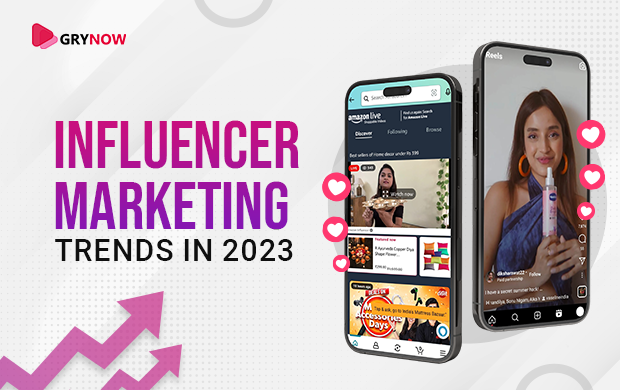As we dive into the year 2024, or should I say the year of ‘new marketing approaches’, we can see how the boundaries of creativity and technology have blurred, crafting a world where every click, view, and swipe means more than ever before.
This blog examines how influencers are incorporating these dynamic threads into the colorful fabric of contemporary marketing, from the ability of video material to draw our attention to the authenticity that gains our trust.
Every online interaction feels especially planned and incredibly fascinating when influencers and businesses include these cutting-edge tools into their strategies, blurring the lines between digital and personal.
Come along as we negotiate these revolutionary 2024 influencer marketing ideas that are paving the way for a new digital marketing era. Every influencer marketing trend covered is a component of a bigger picture that, taken together, creates the colorful and dynamic influencer marketing environment of 2024.
This website offers a road map for understanding how digital voices permeate many sectors and have a significant impact on businesses and consumer behaviour.
Let us therefore embark on this journey together to see how the marketing standards of the future are being shaped by influencer marketing trends in 2024.
Top 2025 Influencer Marketing Trends
1. Video Content Dominance
Statista projects that by 2024, video content will make up 82% of all consumer internet traffic, an increase from prior years. This number emphasises how crucial video is still to digital marketing plans.
Leaders in the industry, platforms like Instagram, YouTube, and TikTok continue to propel trends like live and short-form video production.
EXAMPLE:
Grynow's campaigns, such as the impactful MamaEarth Mother's Day campaign, achieved over 3 million views, clearly illustrating the effectiveness of video content in capturing and retaining large audience attention in today's digital landscape.
2. Rise of Micro and Nano-Influencers
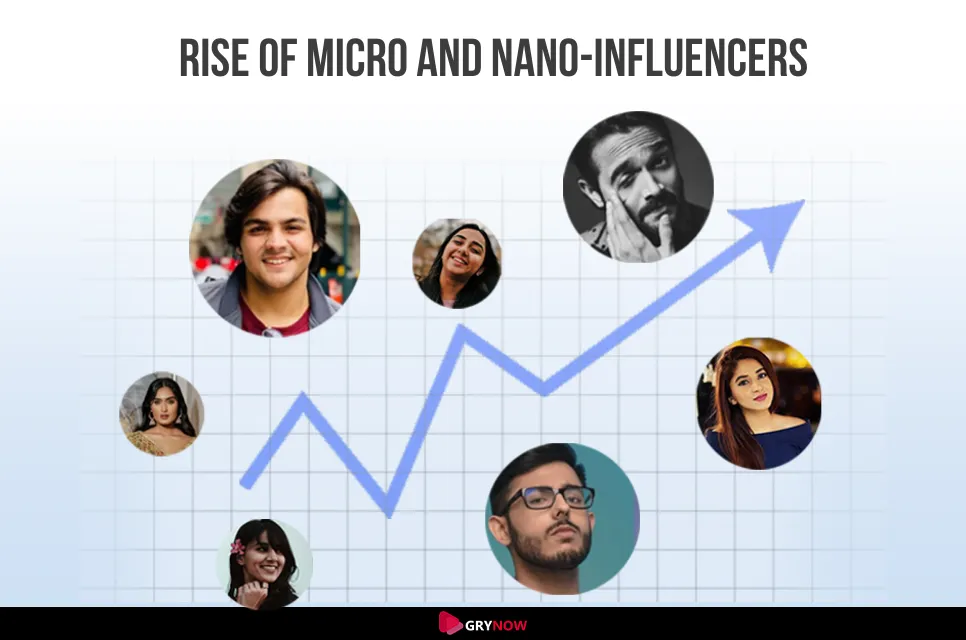
Micro and nano influencers are gaining more traction due to their high engagement rates and credibility. Brands are finding value in partnerships with these influencers for targeted and authentic campaigns, especially as consumers seek genuine connections.
EXAMPLE:
Grynow's strategic deployment of micro-influencers for the Oziva Instagram campaign led to nearly 800,000 views, showing high engagement and proving the value of targeting niche markets with authentic voices.
Read here:Oziva influencer marketing campaign
3. Authenticity and Trustworthiness
Authenticity remains a cornerstone of successful influencer marketing. In 2024, consumers are even more discerning, favouring creators who transparently share their true experiences and opinions, enhancing brand credibility.
EXAMPLE:
The Uptownie fashion campaign, by Grynow, utilizing authentic influencer endorsements, garnered over 700,000 views, substantially enhancing brand credibility and demonstrating the power of genuine influencer partnerships.
Read here:Uptownie fashion influencer marketing campaign
4. Leveraging User-Generated Content
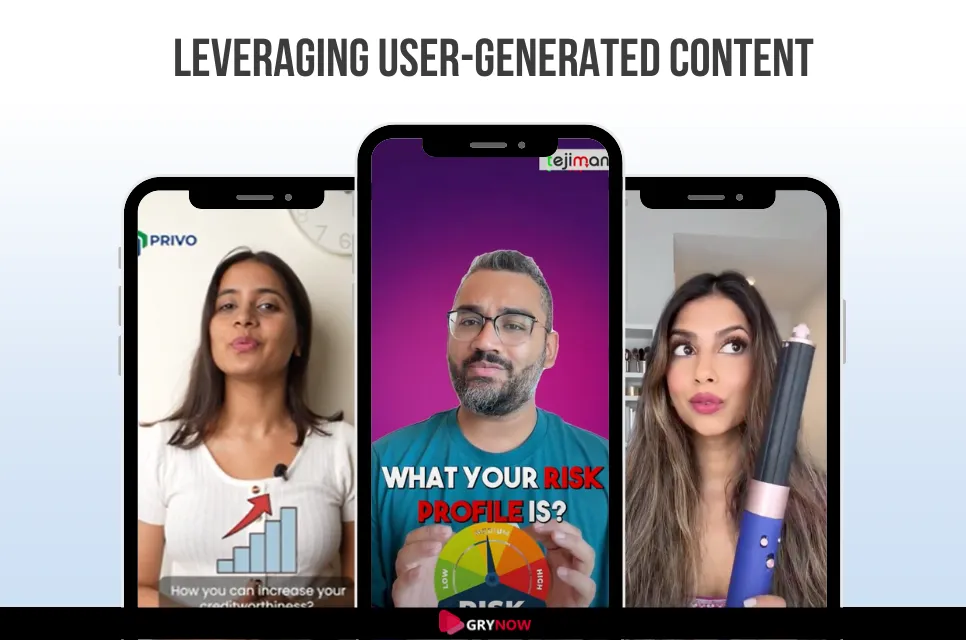
User-generated content (UGC) continues to be a powerful tool for marketers in 2024. UGC not only enhances authenticity but also helps brands build community and engage with their audiences on a deeper level.
EXAMPLE:
Grynow, being the top UGC agency, successfully collaborated with Kotak to implement a UGC strategy resulting in significant audience engagement, showcasing the effectiveness of integrating real consumer voices into brand promotions.
Evolving Role of AI and Technology
Artificial Intelligence (AI) is becoming more integrated into influencer marketing, with tools that enhance content personalization and audience targeting. This technology helps in predicting consumer behaviour and optimizing marketing strategies.
STATS:
Grynow uses cutting edge AI technology to automate audience targeting and content customisation, greatly increasing engagement rates. Their AI Dashboard helps marketers more precisely forecast the effectiveness of their initiatives by analyzing influencer analytics and past campaign results. This capability enables marketers to tailor their strategies dynamically, ensuring optimal alignment with audience preferences and trends.
Related content: Role of artificial intelligence in influencer marketing
6. Expansion into New Platforms
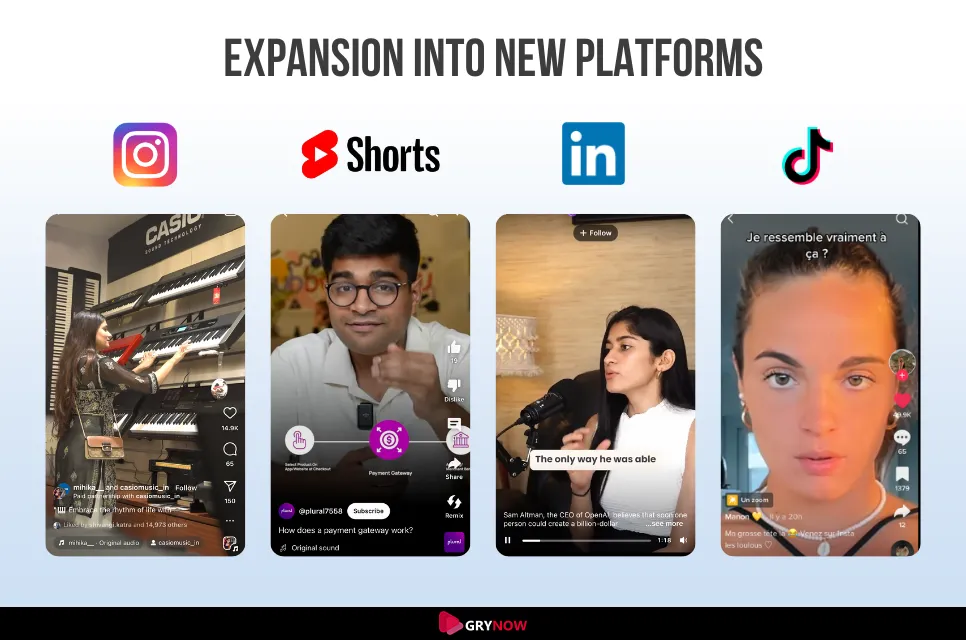
Beyond the established titans like Instagram and TikTok, influencers are looking into new platforms that provide distinctive formats and target demographics. In 2024, this diversity will enable influencers to connect with a larger and more varied audience.
EXAMPLE:
Grynow's research into new and developing platforms has greatly expanded audience demographics, providing customers with a new and varied audience base—a vital resource in the dispersed media landscape of today.
7. Increased Use of Analytics Tools
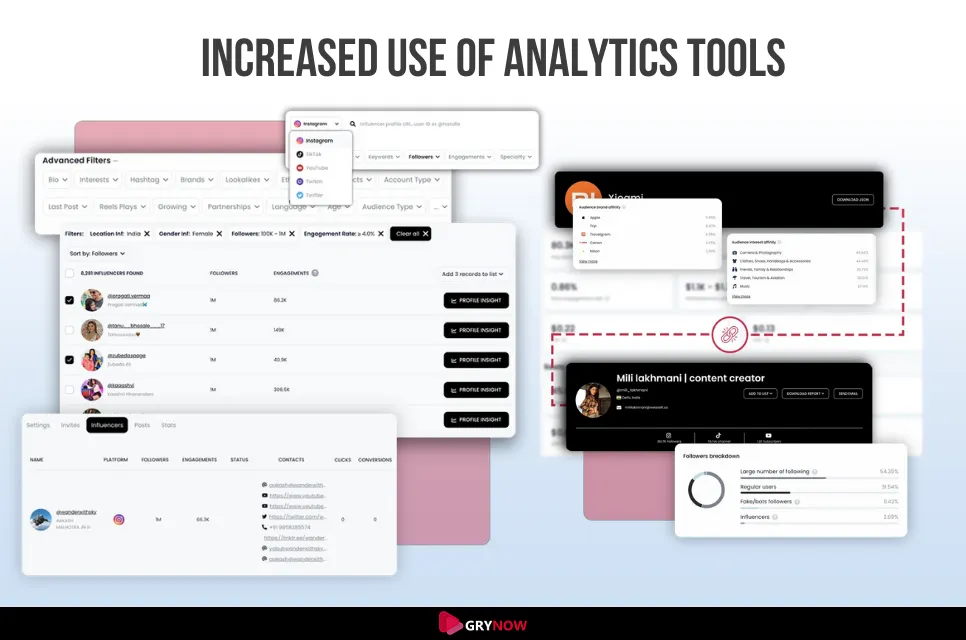
Sophisticated analytics technologies now allow influencers and businesses to have more in-depth understanding of audience participation and campaign success. These instruments will be essential in 2024 to maximise content plans and more successfully calculate ROI.
STATS:
Using advanced analytics techniques, Grynow's AI Dashboard explores psychographic insights and important performance metrics of influencers' audiences. This gives companies in-depth knowledge on the people they want to reach, allowing them to create very tailored marketing plans.
Additionally monitoring response rates and interaction patterns, the analytics provide businesses with useful information to improve next marketing campaigns and raise campaign effectiveness overall.
8. Focus on Long-term Partnerships
Brands and influencers are working together longer as both want to establish enduring connection and trust with their audience. More influence and brand loyalty are being produced by these collaborations than by one-off initiatives.
EXAMPLE:
Long-term partnerships that Grynow has fostered, like with WOW Skin Science, provide recurring interaction and higher loyalty, underscoring the advantages and expanding trend of long-term influencer partnerships.
9. Rising Importance of Social Responsibility
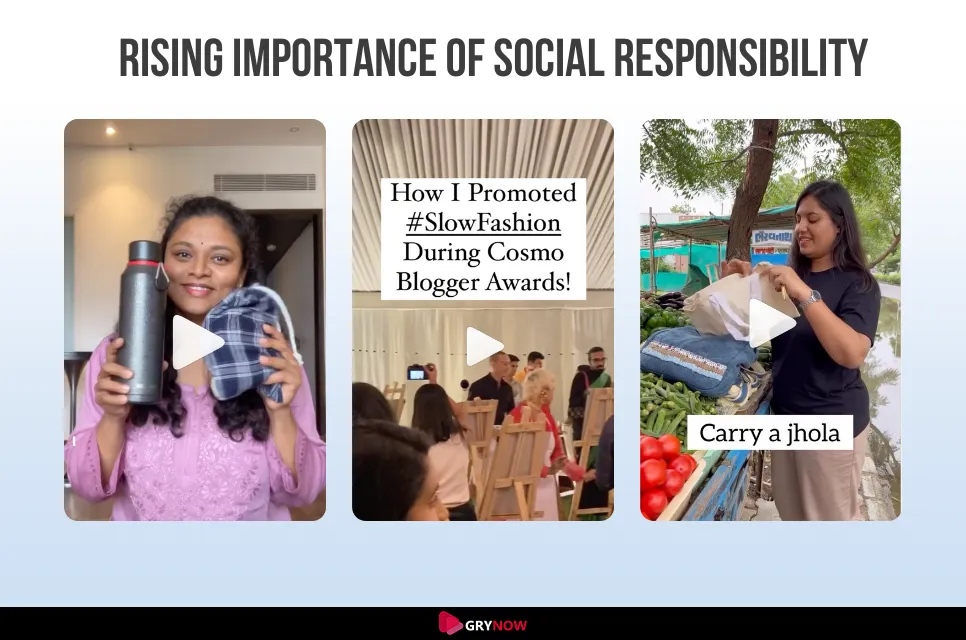
Social responsibility is a significant trend, with influencers and brands increasingly engaging in campaigns that promote sustainability and social justice. This approach resonates well with audiences, particularly Millennials and Gen Z, who prefer to support brands with a conscience.
EXAMPLE:
Grynow’s focus on campaigns that promote sustainability and social justice resonate deeply with younger audiences, leading to a 60% more positive consumer response, proving that modern consumers value brands with a conscience.
10. Integration of Virtual and Augmented Reality
The use of virtual and augmented reality in influencer marketing campaigns is growing. These technologies offer immersive experiences that are captivating audiences, providing new ways for brands to engage consumers and enhance storytelling.
11. Incorporating Interactive Elements
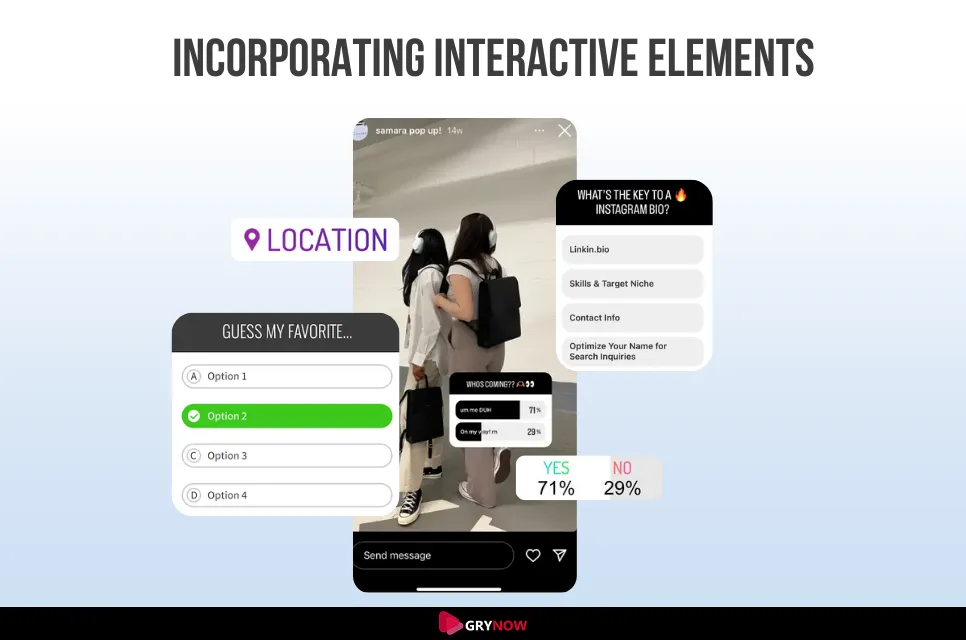
In 2024, interactive elements such as polls, quizzes, and contests are more frequently used in influencer campaigns to boost engagement. These tactics not only increase audience interaction but also provide valuable feedback and data to brands, helping to tailor future marketing efforts more effectively.
STATS:
Interactive elements significantly boost user engagement. A study by the Content Marketing Institute found that 45% of marketers rate interactive content such as assessments, calculators, quizzes, or contests as extremely effective for user engagement.
12. Strategic Use of Stories and Temporary Content
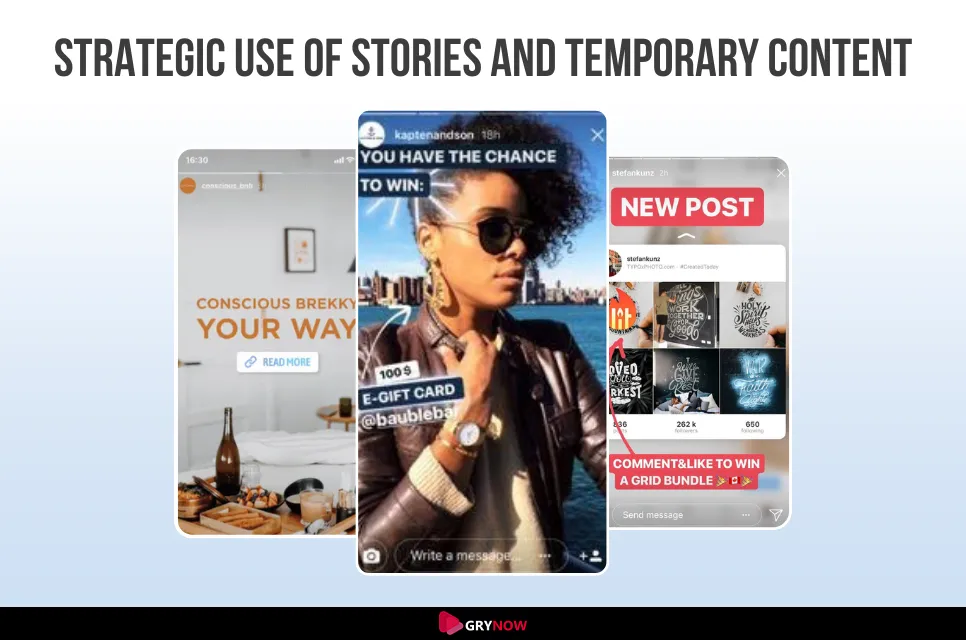
Because it's fleeting, ephemeral content like stories on Instagram and Snapchat keeps being popular and encourages viewers to act quickly. In 2024, companies will take use of this to generate time-sensitive offers and urgent calls to action that will boost user FOMO and promote instant interaction.
STATS:
As a potent instrument for increasing user engagement, ephemeral content—which includes formats like Instagram Stories, Snap, and Facebook Stories—is quickly gaining popularity.
Over 500 million people interact with Instagram Stories every day, demonstrating the enormous audience reach these transient messages may reach. Brands have effectively utilized ephemeral content to heighten user interaction, create a sense of urgency, and drive higher conversion rates (Sprinklr) (Opentracker) .
13. Enhanced Personalization Through Data
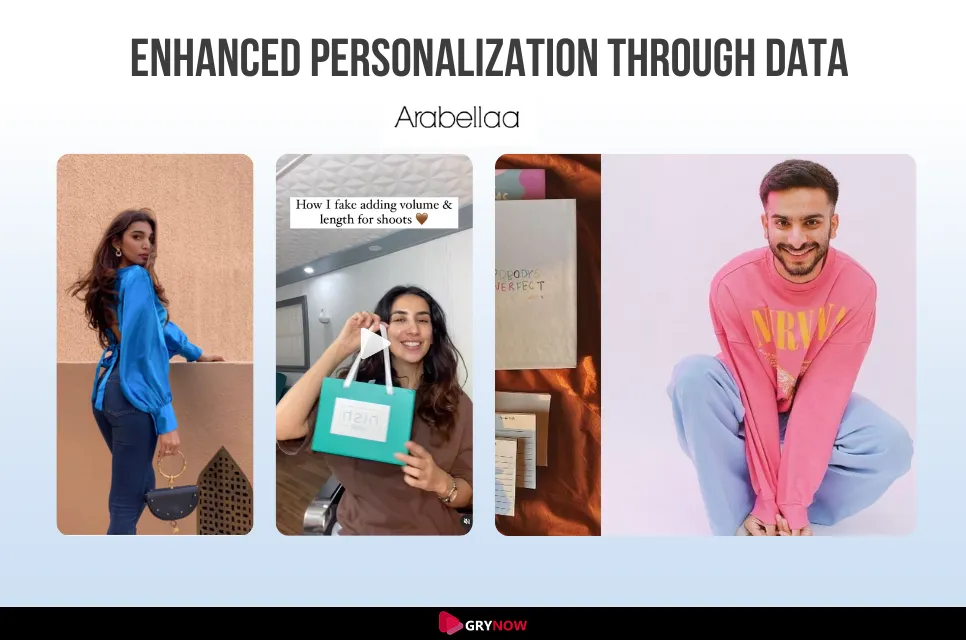
Influencer marketing is seeing unprecedented levels of personalization as data-driven tactics get more advanced. Influencers can better customize their material, increasing relevance and efficacy, by examining audience data. These days, brands working with influencers demand extensive data insights in order to create very effective and individualized campaigns.
EXAMPLE:
Grynow has helped companies like Plix customize content for particular customer groups, which has resulted in over 1.2 million views and greatly increased the relevance of campaigns.
14. Sustainable and Ethical Marketing
Ahead of influencer marketing in 2024 are sustainability and ethics. The social and environmental effects of their purchases are more apparent to consumers. Higher engagement and loyalty from followers of influencers who support ethical and sustainable business practices encourages more companies to use ethical marketing techniques.
15. Growing Influence in Niche Markets
Influencer activity is going up in niche areas. Influencers that focus on particular areas like gaming, health, or environmentally responsible living are becoming increasingly important in determining what consumers want. Through partnerships with these specialized influencers, brands can reach devoted audiences and obtain credibility and in-depth industry knowledge.
16. Rise of Influencer-owned Brands
With their fan communities serving as a quick market reach, more influencers are starting their own businesses. As influencers start businesses and produce goods that embody their own brand and values, this tendency gains traction. Benefiting from the influencer's marketing skills and the built-in audience, brands are also working with these influencer-owned businesses on crossover campaigns.
17. Increased Transparency in Collaborations
Partnerships and sponsorships must now more than ever be transparent. Because consumers want truth in advertising, influencers and businesses are being more transparent about their partnerships. Clear disclosures help viewers appreciate and trust you in addition to meeting legal obligations.
18. Utilizing Influencers for Market Research
A more and more common tool for market research is influencers. Through an analysis of the comments and interaction on products advocated by influencers, marketers can learn about the tastes and actions of their customers. More flexible and responsive product development techniques are made possible by this tendency.
19. More Sophisticated Measurement of ROI
Influencer marketing efforts are measuring their return on investment (ROI) with increasingly sophisticated metrics and data. In assessing the effectiveness of influencer partnerships, brands are looking beyond engagement data to tangible results like sales and conversion rates.
20. Integration of Influencers in Product Development
Influencers are increasingly involved in the product development process. Their insights and direct feedback from engaged communities are valuable for brands looking to introduce products that are likely to succeed. This collaborative approach helps tailor products that resonate well with target audiences, ensuring a more successful launch.
21. Diverse and Inclusive Marketing
Diversity and inclusion continue to be pivotal in marketing strategies. Brands are partnering with a broader range of influencers, representing various cultures, backgrounds, and life experiences. This inclusivity not only broadens the brand's appeal but also strengthens community relations and supports social equity.
22. E-commerce Integration Within Social Platforms
Social media platforms are enhancing their e-commerce capabilities to facilitate seamless shopping experiences directly from influencer content. This integration simplifies the consumer journey from product discovery to purchase, boosting conversion rates and allowing influencers to more directly drive sales.
23. Evolution of Content Formats
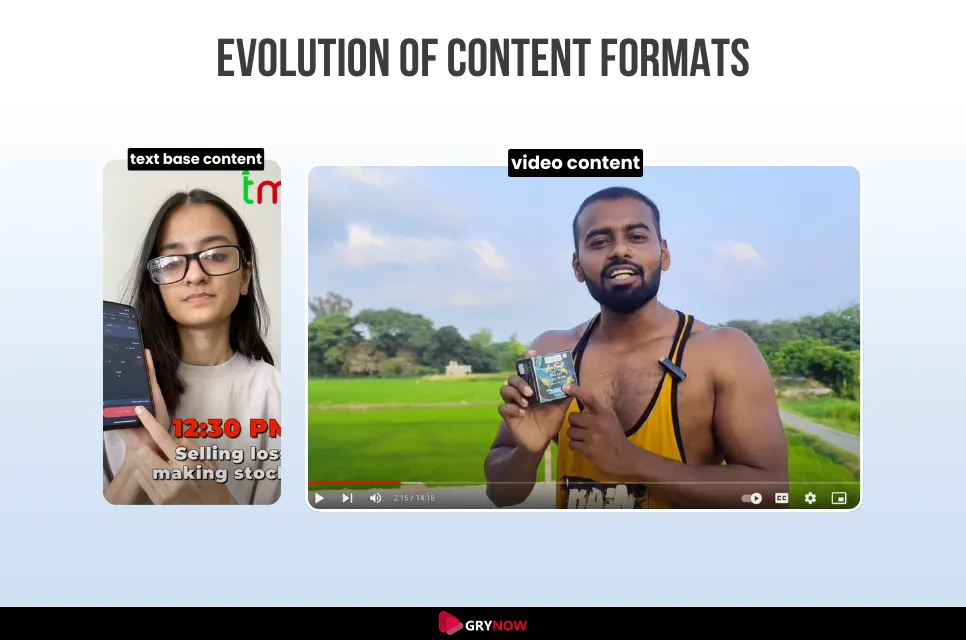
There's a noticeable shift towards mixed media content formats, combining text, video, and interactive elements. This variety caters to diverse consumer preferences and helps maintain audience interest. Brands and influencers who adopt these versatile content strategies tend to engage broader demographics more effectively.
24. Strategic Brand Activism
Through their platforms, influencers are instrumental in brand activism, promoting causes and movements. Customers in 2024 will expect brands to speak up for social causes, so communicating a brand's commitments and values will need influencer collaborations. These meticulously designed ads are meant to connect with the audiences of the company and the influencer, therefore increasing impact and authenticity.
25. Advancements in Influencer Tech Tools
Influencer technology solutions have expanded to include augmented reality filters, AI-driven content recommendations, and comprehensive analytics dashboards. By enabling influencers to produce more interesting and customized content, these tools improve audience engagement and retention.
26. Priority on Data Security and Privacy
Influencers and corporations are giving the privacy of their audience first priority as worries about it grow. Ensuring that data protection laws are followed affects the organization of campaigns as well as the gathering and processing of data.
27. Influencer-Driven Community Building
More and more influencers are concentrating on creating and fostering online communities around particular causes or hobbies. These communities grow to be important assets for companies since they offer a committed and interested audience for launches, criticism, and lobbying initiatives.
28. Leverage of Cross-Platform Strategies
Influencers are utilizing cross-platform strategies to maximize their reach and engagement. By adapting their content to suit different platforms, influencers can engage with diverse audiences, while brands benefit from a broader exposure across the digital landscape.
29. Emphasis on Long-Form Content
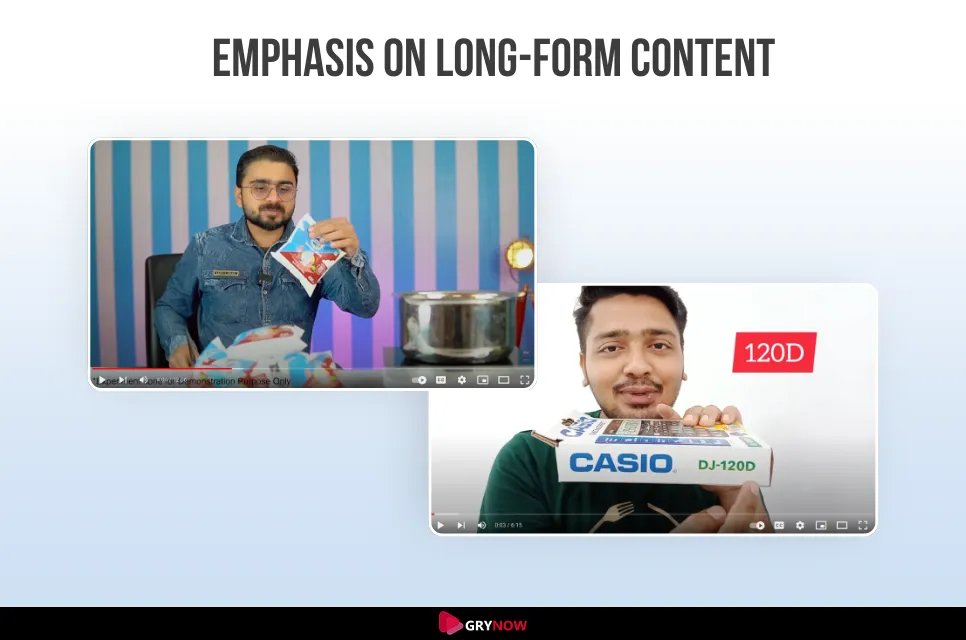
Long-form content is gaining traction, allowing influencers to delve deeper into topics and enhance storytelling. This format is particularly effective on platforms like YouTube and blogs, where detailed product reviews, tutorials, and lifestyle content can lead to higher viewer retention rates.
30. Increased Focus on Global Markets
Influencers are extending their reach globally, capitalizing on international platforms to connect with diverse audiences. Brands are partnering with influencers who can navigate multiple cultural landscapes, broadening their market reach and gaining global traction.
31. Influencer Education and Training
Educational resources for influencers are becoming more widespread, offering training on everything from content creation to legal compliance. This professional development helps maintain high standards in the industry and equips influencers with the skills necessary to succeed in increasingly competitive markets.
32. Greater Integration of Virtual Influencers
Virtual influencers, powered by AI, are becoming more prevalent. These digital personas are capable of engaging with audiences 24/7 and can be tailored to embody ideal brand attributes, making them powerful tools for targeted campaigns.
33. Voice-Activated Content Strategies
Influencers are increasingly using voice-activated content to engage users on smart devices, tapping into the trend of growing voice search and home assistant usage. This approach provides a more interactive and accessible form of content, attracting a broader audience across different age groups.
34. Augmented Reality (AR) Filters Created by Influencers
Influencers are designing unique AR filters in partnership with brands, creating personalized and immersive experiences for users. These filters are not only fun but also serve as innovative marketing tools that enhance brand visibility and user engagement on platforms like Instagram and Snapchat.
35. Rise of Gen Alpha Influencers
The influence of Gen Alpha is expanding as they grow up in a digital-first environment, with some creating content or influencing family decisions from a very young age. Brands are crafting messages that appeal to both children and their parents, capitalizing on the purchasing power behind these young influencers.
36. Sustainable Influence Campaigns
Eco-consciousness is driving influencers to promote sustainability through their platforms more than ever before. They are engaging with environmentally friendly brands and showcasing products that promise lower environmental impact, appealing to eco-aware consumers looking for greener choices.
37. AI-driven Content Personalization
Leveraging AI, influencers can now segment their audience to deliver highly customized content, improving engagement rates by addressing individual interests and behaviors. This technology empowers influencers to craft content strategies that resonate on a personal level, making each interaction more impactful.
38. Blockchain for Transparency and Trust
The integration of blockchain technology in influencer campaigns is enhancing transparency, allowing audiences to easily verify the genuineness of endorsements and collaborations. This use of technology fosters a higher degree of trust and credibility, essential in today's market where authenticity is valued.
39. Government Collaboration with Influencers
Government websites like MyGov are using the influencer marketing potential in a novel way to increase public involvement and involvement in government projects. Influencer partnerships are one way that MyGov hopes to improve openness and encourage citizen participation. With this approach, government organizations engage the public in community-focused initiatives and policy-making by using the reach of social media.
Final thoughts
As the real and virtual worlds evolve, influencer marketing trends also do. Businesses and influencers must so be informed and adapt to the situation. Most look to a top influencer marketing agency for assistance since these experts are able to foresee future influencer marketing trends before they become popular.
The laws and regulations change over time – even differ from place to place. It would be in your best interest to have a top influencer marketing agency overseeing the legalities associated with your campaign.
